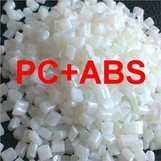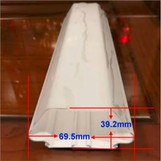In the world of lighting design, LED linear lighting has emerged as a versatile and energy - efficient solution for a wide range of applications. As a leading LED Linear Light supplier, I often encounter questions from customers about the differences between direct and indirect LED linear lighting. Understanding these differences is crucial for making informed decisions when it comes to lighting design and procurement. In this blog post, I'll delve into the characteristics, advantages, and disadvantages of both direct and indirect LED linear lighting, helping you determine which option is best for your specific needs.
What is Direct LED Linear Lighting?
Direct LED linear lighting involves the direct emission of light from the LED source towards the intended area. In this setup, the light is projected in a relatively straightforward manner, without any significant redirection or diffusion. This type of lighting is commonly used in areas where high - intensity illumination is required, such as commercial spaces, industrial facilities, and task - oriented environments.
One of the key features of direct LED linear lighting is its high luminous efficacy. Since the light is emitted directly, there is minimal loss of light energy, resulting in a more efficient use of electricity. This efficiency translates into lower energy costs over time, making it an attractive option for businesses looking to reduce their operational expenses.
Direct LED linear lighting also offers excellent control over the light distribution. With the ability to focus the light precisely where it is needed, it can effectively illuminate specific areas or objects. For example, in a retail store, direct LED linear lighting can be used to highlight merchandise on display, creating a more visually appealing shopping environment.
However, direct LED linear lighting does have some drawbacks. The intense and focused nature of the light can sometimes create harsh shadows, which may be undesirable in certain settings. Additionally, if the LEDs are not properly shielded or diffused, they can cause glare, which can be uncomfortable for the eyes and may even lead to reduced visibility.
What is Indirect LED Linear Lighting?
Indirect LED linear lighting, on the other hand, involves redirecting the light from the LED source onto a surface, such as a ceiling or wall, before it reaches the intended area. This creates a more diffuse and soft lighting effect, similar to natural light. Indirect lighting is often used in spaces where a more ambient and relaxing atmosphere is desired, such as residential living rooms, hotels, and art galleries.
One of the main advantages of indirect LED linear lighting is its ability to create a uniform and shadow - free illumination. By bouncing the light off a surface, it spreads out evenly, eliminating harsh shadows and providing a more comfortable lighting experience. This makes it ideal for areas where people spend a significant amount of time, as it reduces eye strain and fatigue.
Indirect LED linear lighting also adds a sense of depth and dimension to a space. The soft, diffused light can create a warm and inviting atmosphere, enhancing the overall aesthetic appeal of the room. In addition, it can be used to highlight architectural features or create visual interest in a space.
Another benefit of indirect LED linear lighting is its ability to reduce glare. Since the light is not emitted directly into the eyes, the risk of glare is significantly reduced, making it suitable for areas where visual comfort is a priority.
However, indirect LED linear lighting also has some limitations. Due to the redirection of light, there is a certain amount of light loss, which means that it may require more energy to achieve the same level of illumination as direct lighting. Additionally, it may not be as effective for task - oriented activities that require high - intensity lighting.
Comparison of Direct and Indirect LED Linear Lighting
1. Lighting Effect
The most obvious difference between direct and indirect LED linear lighting lies in the lighting effect. Direct lighting provides a focused and intense illumination, while indirect lighting offers a soft and diffuse glow. The choice between the two depends on the specific requirements of the space and the desired atmosphere. For example, in a kitchen where precise task lighting is needed for cooking and food preparation, direct LED linear lighting would be more appropriate. In contrast, in a bedroom where a relaxing and cozy atmosphere is desired, indirect lighting would be a better choice.
2. Energy Efficiency
As mentioned earlier, direct LED linear lighting is generally more energy - efficient than indirect lighting because there is less light loss. However, the actual energy consumption also depends on factors such as the quality of the LEDs, the design of the lighting fixture, and the level of illumination required. In some cases, with the use of advanced lighting controls and high - efficiency LEDs, indirect lighting can also achieve a relatively high level of energy efficiency.
3. Glare and Shadow
Direct LED linear lighting is more prone to glare and harsh shadows due to its focused nature. This can be a problem in areas where visual comfort is important, such as offices and classrooms. Indirect lighting, on the other hand, significantly reduces glare and creates a shadow - free environment, making it more suitable for these types of spaces.


4. Installation and Maintenance
Direct LED linear lighting is often easier to install because it can be mounted directly in the desired location. Indirect lighting may require more complex installation, as it often involves mounting the lighting fixtures in a way that allows the light to bounce off a surface. In terms of maintenance, both types of lighting require regular cleaning to ensure optimal performance, but direct lighting may be more accessible for cleaning and replacement of LEDs.
Applications of Direct and Indirect LED Linear Lighting
Direct LED Linear Lighting Applications
- Commercial Spaces: In commercial buildings such as offices, supermarkets, and warehouses, direct LED linear lighting is commonly used to provide high - intensity illumination for tasks such as reading, working, and product display.
- Industrial Facilities: Industrial environments require bright and focused lighting for safety and productivity. Direct LED linear lighting can be used to illuminate work areas, machinery, and storage areas.
- Outdoor Lighting: Direct LED linear lighting is also suitable for outdoor applications such as street lighting, parking lot lighting, and architectural lighting, where high - intensity illumination is needed over a large area.
Indirect LED Linear Lighting Applications
- Residential Spaces: In homes, indirect LED linear lighting can be used to create a warm and inviting atmosphere in living rooms, bedrooms, and dining areas. It can also be used to highlight architectural features such as crown molding or wall niches.
- Hospitality Industry: Hotels, restaurants, and bars often use indirect LED linear lighting to create a relaxing and elegant ambiance for guests. It can be used to enhance the mood of the space and provide a more comfortable dining or socializing experience.
- Art Galleries and Museums: Indirect lighting is ideal for art galleries and museums because it provides a soft and even illumination that does not cause glare or damage to the artworks. It allows visitors to view the exhibits without distractions.
Making the Right Choice
When choosing between direct and indirect LED linear lighting, it's important to consider the specific needs of the space, the desired atmosphere, and the budget. Here are some tips to help you make the right decision:
- Understand the Purpose of the Space: Determine whether the space requires high - intensity task lighting or a more ambient and relaxing atmosphere.
- Consider the Aesthetic Requirements: Think about the overall style and design of the space and how the lighting will complement it.
- Evaluate the Energy Efficiency: Look for lighting solutions that offer a good balance between energy efficiency and the desired level of illumination.
- Test the Lighting: If possible, test different lighting options in the space to see how they look and feel before making a final decision.
As a trusted LED Linear Light supplier, we offer a wide range of LED Linear Lightings, including Aluminium Strip Lighting and Flexible Linear Light. Our products are designed to meet the diverse needs of our customers, whether you are looking for direct or indirect lighting solutions. If you have any questions or need assistance in choosing the right LED linear lighting for your project, please feel free to contact us. We are here to help you create the perfect lighting environment.
References
- "LED Lighting Handbook" by Philips Lighting
- "Lighting Design Basics" by the Illuminating Engineering Society (IES)
- Industry reports and research papers on LED lighting technology.




